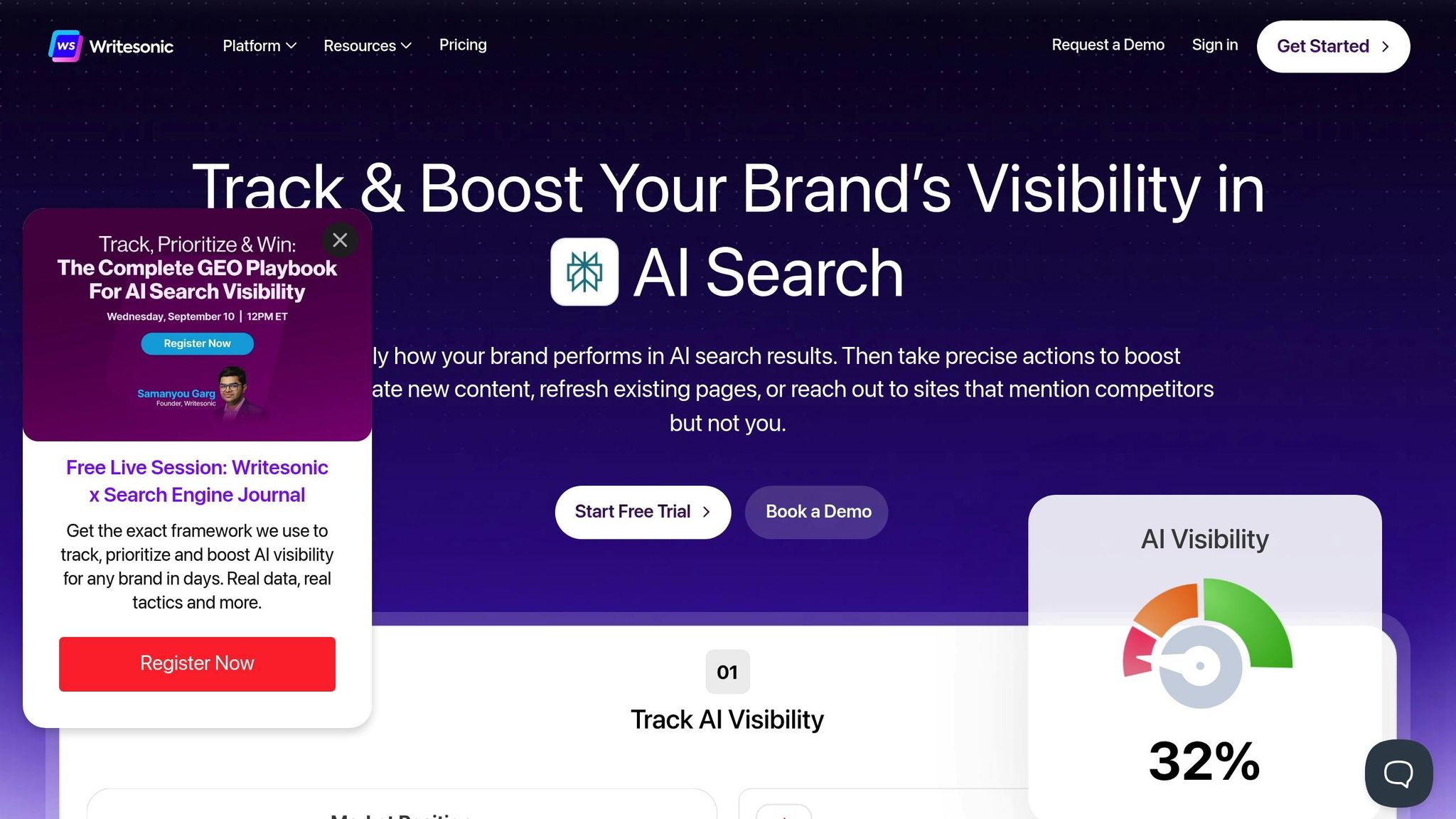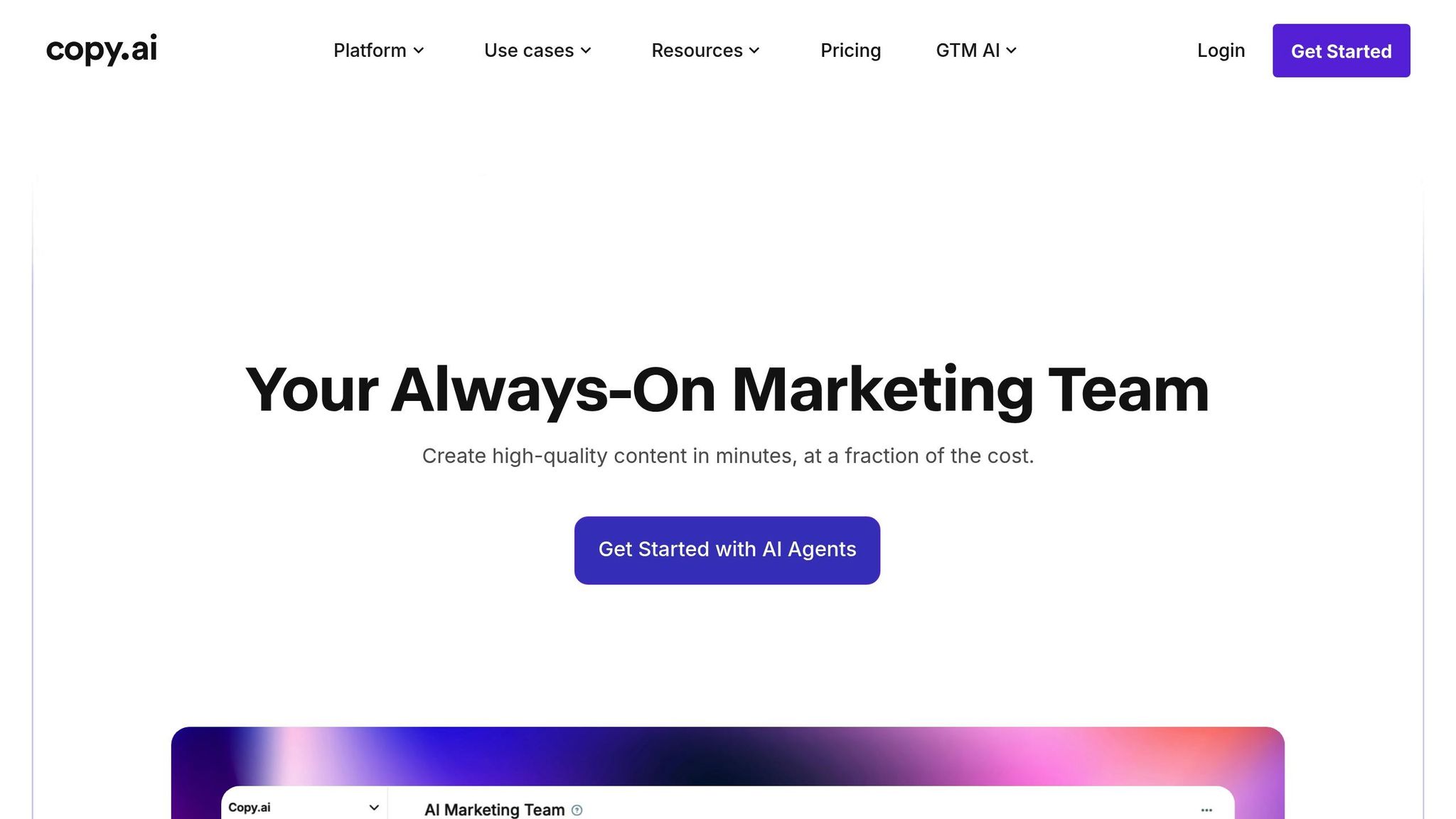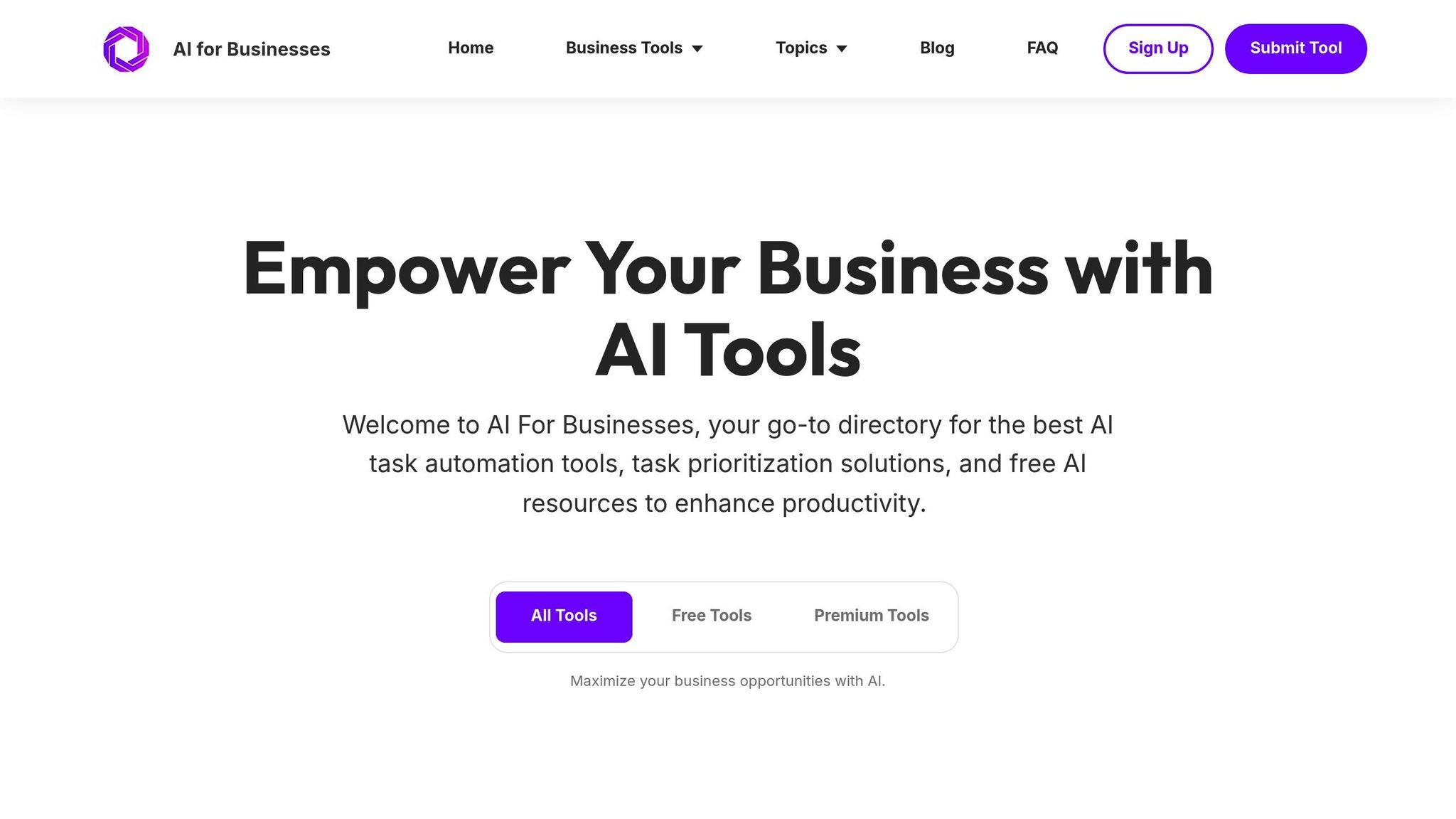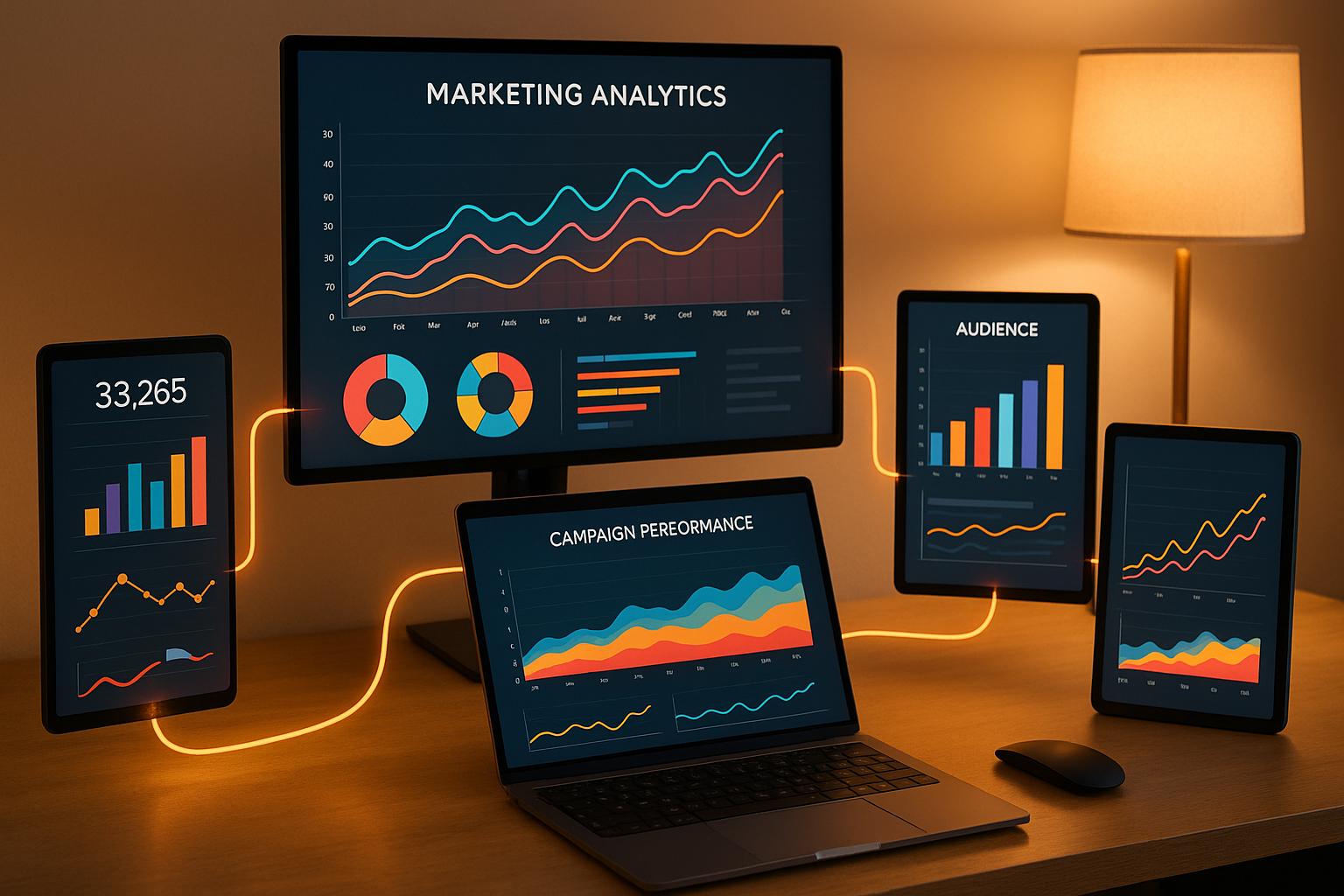AI simplifies content brainstorming by analyzing data and trends to deliver targeted, actionable ideas. It helps businesses save time, focus on audience needs, and align content with goals. Here's how it works:
- Input Details: Define your audience, goals, and preferred formats.
- Analyze Trends: AI reviews search data, social media, and industry updates.
- Generate Ideas: Suggestions include topics, formats, and outlines tailored to your brand.
Top tools like Writesonic and Copy.ai streamline this process, while directories like AI for Businesses help you find the right fit. AI also tracks performance, refining ideas based on engagement to improve future strategies.
I Used AI to Find Endless Content Ideas and Here's What Happened
How AI Creates Content Ideas
AI has revolutionized how businesses generate content ideas, turning raw data into actionable insights. By following a systematic process, AI delivers tailored suggestions that align with your marketing goals and audience needs. Here's a breakdown of how this works:
Step 1: Define Campaign Goals and Audience Details
The process starts with you providing clear and specific details about your objectives and target audience. AI thrives on precise inputs to craft suggestions that meet your needs rather than offering generic ideas.
- Choose your content format (e.g., blogs, social media posts, videos, newsletters) and specify the language and tone.
- Provide key terms, including a primary keyword and related phrases, to guide the AI's focus.
- Outline your goals, such as increasing brand awareness among millennials or boosting software sign-ups.
- Share details about your audience - demographics, interests, and behaviors - to fine-tune the AI's recommendations.
- Include examples of your brand’s style to ensure consistency across all suggestions.
"To use it effectively, you need to feed it precise inputs and clear instructions, rather than relying solely on what it has learned from its training data." - AnywayMarketing, r/Entrepreneur
Once these parameters are set, the AI begins analyzing market trends to refine its ideas.
Step 2: Analyze Trends and Data
Next, the AI dives into real-time data to uncover trends and opportunities. This stage ensures the content ideas it generates are not only relevant but also timely.
- It scans social media trends, search query data, and industry publications to identify emerging topics and seasonal patterns.
- Keyword performance metrics, such as search volume trends, help the AI prioritize ideas that are likely to perform well in search results.
- This step allows the AI to process vast amounts of information quickly, providing insights that would take humans much longer to uncover.
Step 3: Generate and Organize Content Ideas
In the final stage, AI organizes its findings into actionable recommendations, making it easy for you to evaluate and implement them.
- The AI creates tailored lists of content ideas, which you can customize by quantity (e.g., "10 blog ideas") or format (e.g., "800-word article concepts").
- It incorporates your brand voice, audience preferences, and goals into each suggestion.
- For more detailed content, such as blog posts, the AI can provide outlines, subtopics, and even recommended calls to action. This bridges the gap between brainstorming and execution.
"The principle is simple: the better your input, the more valuable the output from AI." - Leah Messenger, Content Marketing Manager, Optimizely
The success of AI-generated ideas hinges on the quality of the information you provide. While AI excels at synthesizing data, it relies on well-defined inputs to deliver relevant and impactful results.
Best AI Tools for Content Ideas
When it comes to generating content ideas with AI, the right tools can make a world of difference. They don’t just save time - they can also refine your content strategy and spark ideas you might not have considered. Whether you’re brainstorming blog topics, planning social media posts, or building a full-fledged marketing campaign, these tools can help you stay ahead. Here are some standout options for AI-assisted content ideation.
Writesonic

Writesonic is designed to turn your keywords and audience details into actionable content ideas. It’s especially useful for brainstorming blog topics, crafting social media posts, and planning marketing campaigns. Plus, it integrates SEO considerations into the process, making it easier to align your ideas with search engine goals.
Copy.ai

If you’re looking for quick, diverse content ideas, Copy.ai has you covered. From blog posts to email newsletters and social media content, this tool helps you maintain a steady flow of ideas across multiple channels. It’s all about keeping your content pipeline filled and ready to go.
AI for Businesses Directory

The AI for Businesses Directory is a one-stop platform for discovering the best AI tools tailored to small and medium-sized enterprises (SMEs) and growing businesses. Instead of testing countless platforms, you can explore detailed information about tools like Writesonic, Rezi, and Stability.ai - all in one place.
The directory offers insights into tool capabilities, pricing, and use cases, making it easier to find the perfect fit for your business needs. Plans include a free Basic option, a Pro plan at $29 per month (with full access and priority support), and custom Enterprise solutions. By centralizing this information, the platform helps businesses save time and resources, simplifying the integration of AI into their content marketing strategies.
sbb-itb-bec6a7e
Best Practices for AI Content Ideas
To get the most out of AI-generated content ideas, it's essential to keep your inputs updated and manage your tools effectively. The quality of your results depends largely on how you approach the process and maintain your AI systems. Here are a few strategies to help you create content that connects with your audience while maximizing your investment.
Keep Campaign Information Current
AI tools are only as effective as the data you feed into them. Using outdated audience profiles or old keyword lists can lead to content ideas that miss the mark. Regularly updating this information is key.
For example, revisiting your target audience profiles ensures they reflect any shifts in demographics or preferences. Fresh data helps your AI tools generate ideas that are more in tune with your market.
Similarly, keyword research should be refreshed often, especially in industries where trends change quickly. Search behaviors evolve, and keywords that worked last year - or even last month - might no longer be relevant. By providing updated, high-performing keywords, you'll enable your AI tools to suggest ideas that align with what people are actively searching for.
In short, accurate and current data serves as the foundation for blending AI-driven insights with your creative expertise.
Combine AI Ideas with Human Input
While AI excels at spotting patterns and generating ideas, it lacks the creativity and intuition that humans bring to the table. The best content strategies combine the strengths of both.
Think of AI-generated ideas as a starting point. For instance, an AI might suggest a broad topic like "5 Ways to Improve Productivity." With your expertise, you could refine this idea into something more specific and relevant, such as "5 Ways Remote Teams Can Stay Productive During Holiday Seasons." This added layer of context ensures the content resonates more deeply with your audience.
Human editors also play a crucial role in adding nuance and ensuring the content aligns with your brand's voice and values. They can assess whether a topic is timely, sensitive, or needs a localized approach. By letting AI handle the initial brainstorming and allowing your team to fine-tune and personalize the content, you can boost both efficiency and quality.
This collaboration doesn't stop at creation - it extends to monitoring and refining strategies.
Use AI for Performance Tracking
AI isn't just useful for generating ideas; it can also analyze how your content performs. Modern AI tools can track key metrics like engagement, click-through rates, and conversions, using this data to refine future recommendations.
For example, if your audience consistently engages more with how-to guides than listicles, the AI can prioritize similar formats in its suggestions. This feedback loop allows your tools to adapt and improve over time, offering ideas that align with proven success patterns.
Performance data can also reveal content gaps. If beginner-level posts outperform advanced topics, your AI might suggest more entry-level ideas to meet audience demand. Regular reviews of these metrics can help you spot emerging trends early, giving you the chance to adjust your strategy proactively.
Conclusion: Why AI Changes Content Creation
AI has reshaped how content is created, turning it into a streamlined, data-driven process. For small and medium-sized businesses (SMEs) and growing companies, this shift levels the playing field, giving them access to strategies that were once reserved for larger corporations with dedicated marketing teams.
With a simple three-step process, AI provides a solid starting point for businesses without requiring deep marketing expertise. This shift means that even a local service provider can go toe-to-toe with well-established brands by using intelligent tools that analyze market trends and audience preferences.
What sets AI apart is its ability to blend data insights with human creativity. This combination allows SMEs to craft strategies that rival those of major players. Plus, AI offers scalability - whether you’re brainstorming five content ideas a week or fifty - while preserving a genuine, human touch through collaboration between AI and human input.
Choosing the right tools is just as important as generating ideas. Platforms like AI for Businesses make this easier by offering a curated selection of AI tools that other SMEs have already tested and implemented, saving valuable time and effort.
The real game-changer is AI's ability to learn from performance data and improve its recommendations over time. This creates a feedback loop that sharpens your content strategy, helping you understand what resonates with your audience while adapting as your business grows.
Armed with actionable insights and efficient tools, the next steps are clear: set specific goals, use AI to generate initial ideas, and refine those ideas to align with your brand’s unique voice. By doing so, you can build a content creation process that not only keeps you competitive but also scales alongside your business.
FAQs
How can businesses make sure AI-generated content fits their brand voice and marketing goals?
To make sure AI-generated content truly matches your brand's voice and supports your marketing goals, start with a comprehensive style guide. This guide should clearly define your tone, preferred language, and key messaging principles, acting as a go-to resource for any AI tools you use.
When working with AI, craft precise prompts to steer the content creation process in the right direction. Don't forget to provide feedback on the AI's output to fine-tune the results over time. It's also crucial to maintain regular human oversight - review and tweak AI-generated content to ensure it aligns with your brand's personality and delivers on your marketing objectives.
How can I keep AI tools updated to generate better content ideas?
To get the best content ideas from AI tools, it's crucial to keep them updated with fresh data. Feed them information on current trends, audience preferences, and relevant keywords. This ensures the AI stays in sync with market needs and generates ideas that are timely and on point.
Another key step is sharing performance metrics and feedback from previous campaigns. By doing this, you fine-tune the AI's ability to suggest ideas that truly connect with your audience. Regular updates with accurate and relevant data keep the AI's output sharp and aligned with your content strategy.
How does AI track performance to improve content strategies?
AI keeps an eye on performance by diving into engagement metrics such as likes, shares, comments, and the time users spend on content. By spotting patterns and trends, it gives marketers a clearer picture of what clicks with their audience.
On top of that, AI tools analyze audience behavior and highlight areas where content might be falling short. These tools offer practical insights that help refine upcoming campaigns. This ongoing feedback loop sharpens targeting, improves personalization, and boosts the overall effectiveness of content, making marketing strategies hit closer to the mark.


